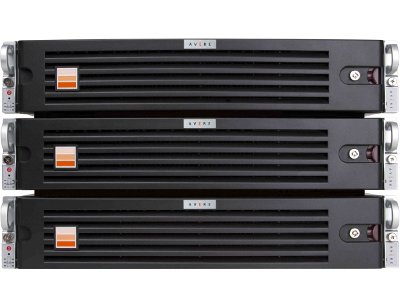Lightspeed Venture Partners has led the third funding round for Avere Systems, a Pennsylvania-based firm with an innovative storage-optimization technology, raising US$20m, and participated in $15m B-round by Boundary, which has a performance-monitoring solution for cloud-based applications.
Menlo Park, California-based Lightspeed manages more than $2.7bn of capital. Its portfolio includes a range of leading high-tech companies, such as Blue Nile, Brocade, Fision-io, LivingSocial and TaskRabbit, among others.
Avere’s latest financing round, also joined by Menlo Ventures, Norwest Venture Partners and Tenaya Capital, brought the total amount the company has raised to date to $52m.
First version of the company’s core product was Avere FXT, or what its CEO and president Ron Bianchini called “very intelligent cache”.
This was an appliance equipped with fastest types of storage media that sat between the clients and the core file server in the network-attached storage (NAS) infrastructure.
The appliance relegated different types of files to different storage tiers, depending on requirements. A file with high random-read requirements would be stored on solid-state drives (SSDs), data that was sequential but required high throughput would be placed on spinning media and archival data would be relegated to the core filer that would store it on the main NAS infrastructure.
When a user requested data from NAS, the appliance would satisfy the request by either serving data it stored itself on one of the faster media types or by retrieving data from core storage.
In practice, Avere achieved a 50:1 off-load ratio, which means for every 50 requests, only one would have to be sent to the core filer, Bianchini said in a video presentation available on YouTube. The rest would be turned around within the FXT cluster.
As a result, many of the customers would replace arrays within their core storage infrastructure with lower-performance and lower-cost solutions, since much of the heavy lifting was be done by the FXT cluster.
Avere’s latest product, announced in March, takes things further by serving all storage requests itself, using the core filer and the main NAS infrastructure as a repository, storing images of all files in a process asynchronously with client requests processed by the edge filer. As far as latency goes, AOS 3.0 makes the infrastructure behave as if all NAS requests are processed locally.
If the user decides to write more than the edge filer can hold, it automatically defaults to behaving like the first version of the solution did, caching some files and sending rest to the core filer.
San Francisco-based Boundary said it will use capital raised in the latest round to scale its business to capitalize on the growing demand for cloud-borne application performance monitoring.
This was the second time Lightspeed participated in financing for Boundary. This round was led by Scale Venture Partners.
To learn about the state of investment in data centers and data center technology, sit in on the data center finance panel presentation at next week’s DatacenterDynamics Converged conference.
Follow live coverage of Converged San Francisco on Twitter through #DCDSF2012

